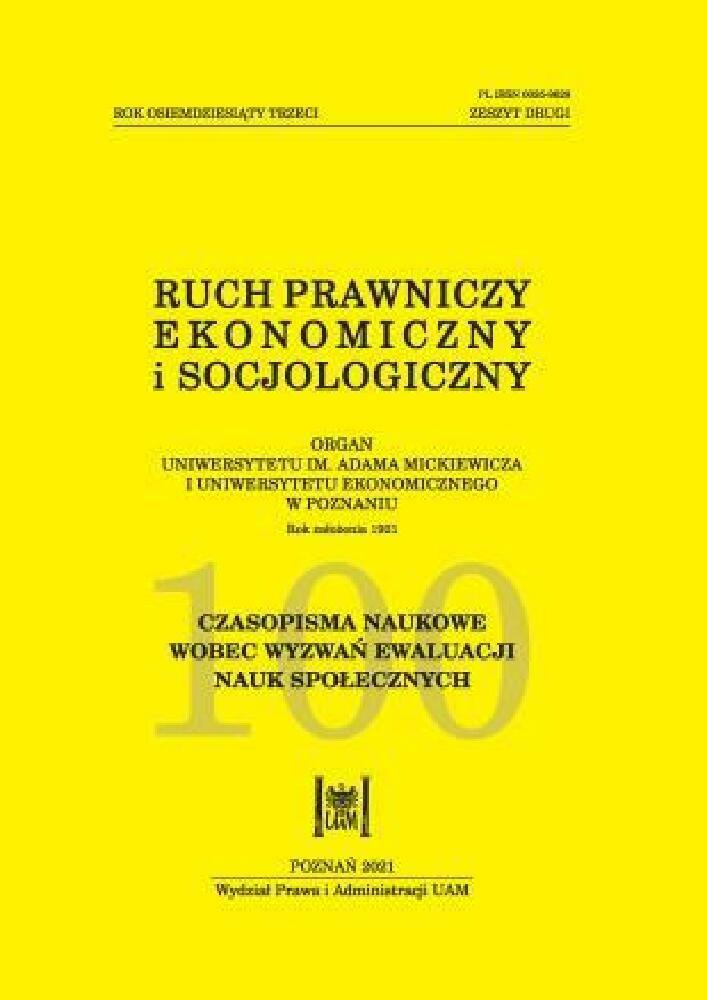Abstrakt
The paper discusses two important trends that have shaped research in the economic sciences over the last two decades. The first one is the growing interdisciplinarity of economic research. The second one is the impact of technological changes on research in the economic sciences. The paper presents the author’s systematization of these problems.
Bibliografia
Calabresi, G. (1961). Some thoughts on risk distribution and the law of tarts. Yale Law Journal 70(4): 499–553.
Coase, R. (1961). The problem of social cost. The Journal of Law and Economics 3(1): 1–44.
Granovetter, M. (1985). Economic action and social structure: the problem of embeddedness. American Journal of Sociology 91(3): 481–510.
Guiso, L., Sapienza, P., Zingales, L. (2004). The role of social capital in financial development. American Economic Review 94(3): 526–556.
Haber, S., Stornetta, W.S. (1991). How to timestamp a digital document. Journal of Cryptology 3: 99–111.
Henderson, J.V., Storeygard, A., Weil, D.N. (2009). Measuring economic growth from outer Space. NBER Working Paper No. 15199.
Jajuga, K. (2019). Nauki ekonomiczne – dylematy klasyfikacji dyscyplin. Tendencje zmian, [in:] Ewolucja nauk ekonomicznych: 140–150. Warsaw: PAN.
Kahneman, D., Tversky, A. (1979). Prospect theory: an analysis of decision under risk. Econometrica 47(2): 263–292.
King, R.D., Whelan, K.E., Jones, F.M., Reiser, P.G.K., Bryant, C.H., Muggleton, S.H., Kell, D.B., Oliver, S.G. (2004). Functional genomic hypothesis generation and experimentation by a robot scientist. Nature 427(6971): 247–252.
Lindbeck, A. (2008). The Sveriges Riksbank Prize in Economic Sciences in Memory of Alfred Nobel 1969–2007. .
OECD Classification. <http://www.oecd.org/science/inno/38235147.pdf>.
Platt, M.L., Glimcher, P.W. (1999). Neural correlates of decision variables in parietal cortex. Nature 400(6741): 233–238.
Romer, P.M. (1990). Endogenous technological change. Journal of Political Economy 98(5): 71–102.
Licencja
Prawa autorskie (c) 2021 WPiA UAM

Utwór dostępny jest na licencji Creative Commons Uznanie autorstwa – Użycie niekomercyjne – Bez utworów zależnych 4.0 Międzynarodowe.





